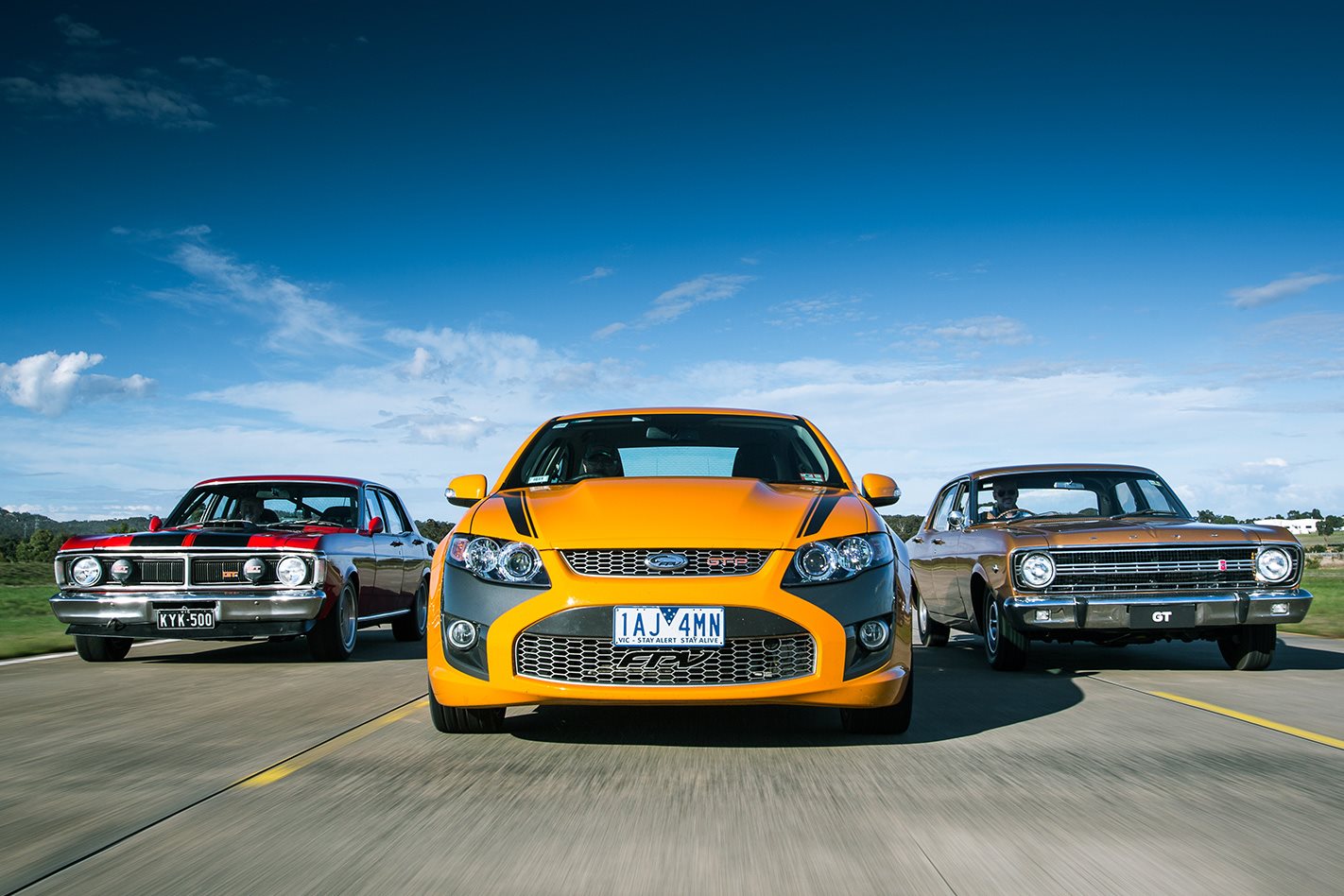EVERY STORY must have a beginning, and the Falcon’s started with the release of the XK in 1960.
Initially a locally-assembled version of the new US mid-sizer, it didn’t take long for the Falcon to be tweaked to suit Australia’s unique environment, setting in motion a narrative that would take 56 years to reach its conclusion.
It’s a tale with many twists and turns – and it was almost over before it began. Early Falcons were literally shaken to pieces by Australia’s rough roads and sales dived with the ‘Foul Can’ proving itself unable to hack life Down Under.
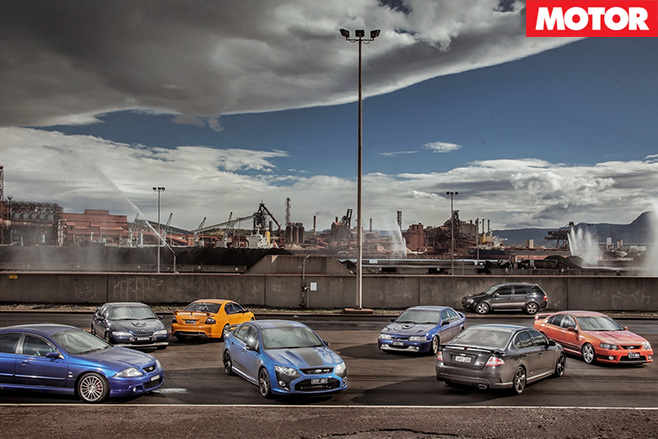
The Falcon was off and running, on its way to becoming arguably Australia’s most loved model. It’s this story that we’ll be telling over the next 12 pages, but this being MOTOR, we won’t be dealing with Fortes or Fairmonts, or discussing improvements in trim quality or rear leg room.
Nope, we’re interested in the fast stuff, the models that tore rear tyres to shreds, put a smile on the driver’s face and instinctively made enthusiasts turn their heads as they burbled (or roared) down the road.
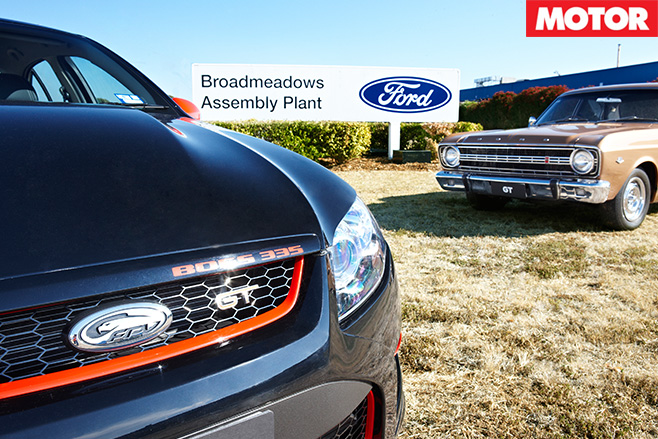
Sadly, at a time when Ford has rediscovered its performance mojo with cars like the new Mustang and Focus RS, we’re forced to celebrate what’s been rather than what’s still to come.
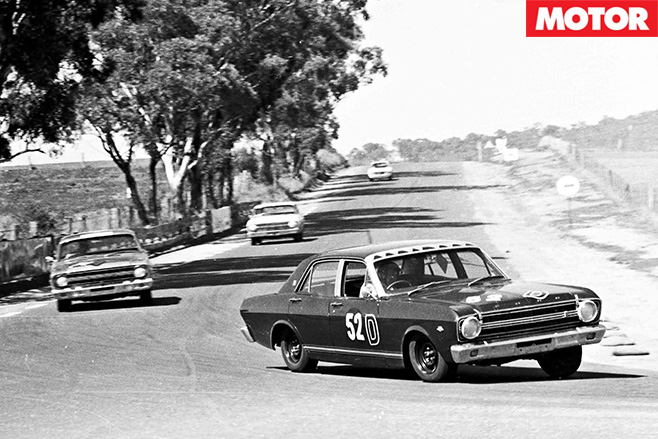
At Bathurst in 1967, a new chapter in Australian motoring began, entitled ‘High Performance’. Local manufacturers had dabbled in tuned-up variants of regular models in previous years, most notably Holden’s EH S4 and Ford’s Cortina GT500, but both were built in very limited numbers and so of questionable relevance to the car-buying public.
With a 168kW 4.7-litre V8, uprated suspension, front disc brakes, quicker steering and wider wheels and tyres, the XR Falcon GT redefined what constituted a fast car in Australia and set the Aussie muscle car template for the next 50 years. Crucially, 596 were built, which meant that your average Joe also had a chance of finding one in a dealership.
It was an immediate success, filling six of the top 10 places on the grid for the 1967 Bathurst 500 and, crucially, the top two spots on the podium, Harry Firth and Fred Gibson (pictured negotiating Murray’s corner) securing victory from Ian and Leo Geoghegan in controversial circumstances following a lap-timing irregularity. The leading Mini Cooper S, the car that had utterly dominated the previous year, was two laps down in fifth place. From now on, power would rule the roost at Mount Panorama.
It’s impossible to overstate the impact this first V8 Falcon had on Australia car culture. It was the first shot in a performance car war that would engulf Ford and Holden for much of the next 50 years.
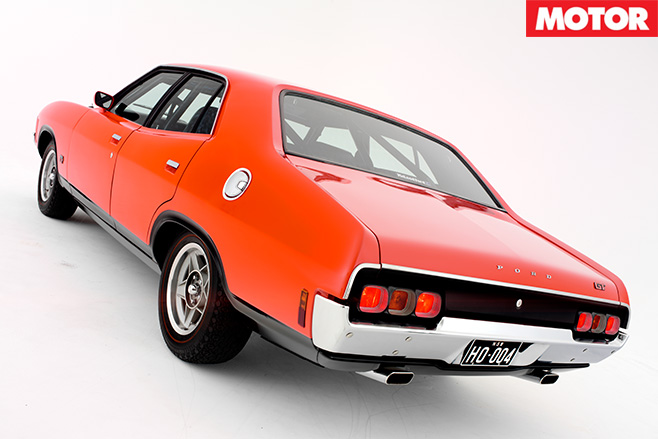
BY THE early 1970s, flower power had been replaced by horsepower. Ford, Holden and Chrysler were all engaged in a fierce battle to build the fastest Bathurst weapon – and Ford was winning.
The Bathurst qualifying times from this era provide a graphic example of the giant strides being made in performance year-on-year. Ian Geoghegan’s 1967 pole time in the XR GT was 3min3.0sec; by 1970 Allan Moffat had lowered that to 2min49.3sec in the XW GT-HO Phase II. A year later, however, driving the new XY GT-HO Phase III, Moffat recorded 2min38.9sec, an improvement of more than 10 seconds in 12 months.
The outcome of this arms race is well-known; newspapers got involved, governments were spooked, threats were made and the new breed of supercars was cancelled. Holden’s proposed V8 GTR XU-1 never saw the light of day, but with XA Falcon GT-HO Phase IV production already underway, four managed to escape captivity.
Three were race cars in Brambles Red, only two of which survive, while a solitary road car in Calypso Green was the only Phase IV to receive a compliance plate. Current values are impossible to gauge, as the last Phase IV to change hands was the car you see here in 2000.
It’d be more than 30 years before Ford created a Falcon with this level of performance again.
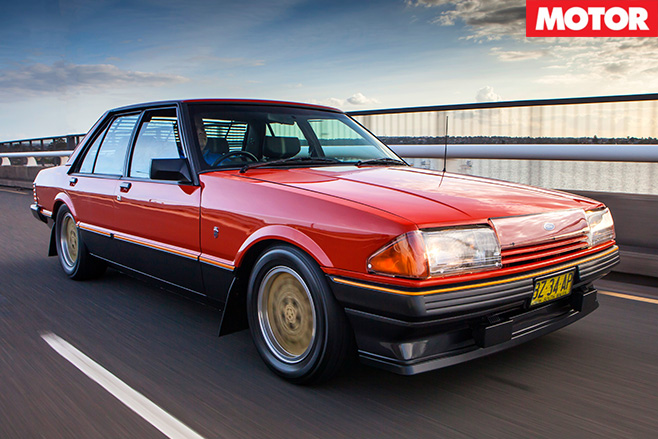
THE 1980s was a decade of dire straits, but while Mark Knopfler and his merry men were on their way to becoming one of the biggest bands in the world, performance Falcon fans were to discover the true meaning of the phrase when Ford announced it was killing the V8 in 1982. Officially, the last V8 Falcon was a 4.9-litre Fairmont Ghia ESP with a four-speed manual built on November 25, 1982.
It was a moment of some significance, with a media event held to commemorate the occasion and the car in question fitted with a plaque to cement its status. However, there’s plenty of evidence to suggest that Ford continued building V8 Falcons on a special order basis into 1983. It appears that these cars were built on the production line as six-cylinder models before being fitted with a V8 – whether it be the 4.9- or the 5.8-litre engine – at a later stage off-line.
Sadly, the factors that led to the V8’s demise – depressed economy, oil crisis – didn’t last as long as expected and Ford unwittingly steered a generation of enthusiasts towards Holden dealerships, who were only too happy to sell you a V8 Commodore similar to the one being driven by the likes of Peter Brock and Allan Grice at racetracks around the country.
However, nature abhors a vacuum and so does the automotive industry. Certain outfits, including Dick Johnson, who campaigned a Falcon in the Australian Touring Car Championship for as long as possible, began to investigate turbocharging the 4.1-litre six, but it would be another 20 years before a force-fed Falcon really caught on.
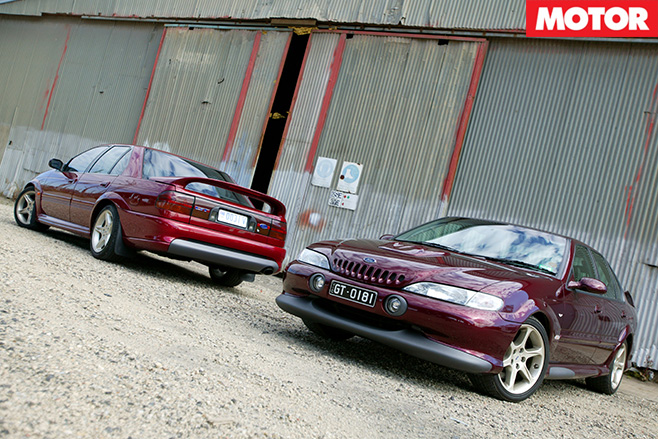
Hallelujah. Salvation at last. After an absence of almost a decade, a V8 returned to the Falcon line-up. With Aussie Jac Nasser at the helm, Ford was back in the local performance game in a big way. As well as the return of the V8, there was the introduction of a new sports model, the S XR8.
Less than a year later, the Series II update brought with it the Tickford-enhanced S XR6, as well as a new GT to celebrate 25 years since the introduction of the XR. It may not have been the prettiest GT, nor was it the fastest with just 200kW, but it was exclusive (265 built) and its very existence proved that Ford was once again serious about speed.
This resurgence was perfectly timed, as big rear-drive V8 sedans were once again Australia’s premier motorsport category, the controversial Group A regulations replaced by V8 Supercars in 1993. Only two teams used EB Falcons in that inaugural year, but between them they occupied four of the first five spots in the championship, Glenn Seton earning his maiden title.
Ford was riding the crest of a wave, the EF Falcon selling a record 81,300 units in 1995. The Commodore stole the sales crown in 1996, but the EL continued to sell well, though the 30th Anniversary EL GT was even uglier than the EB! Unfortunately, the decade ended with Ford struggling to shift the unloved AU while Holden sold up a storm.
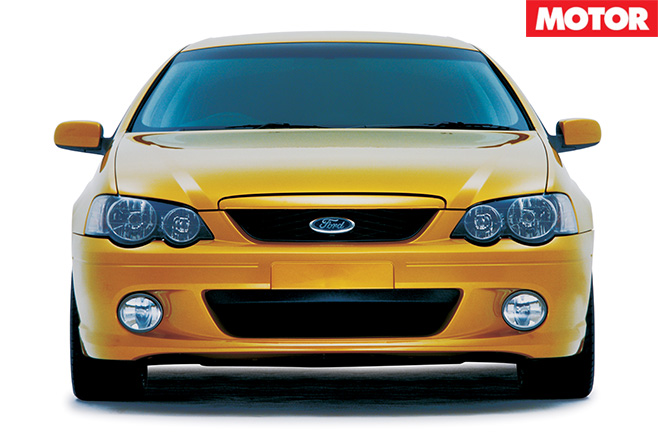
The arrival of the new millenium allowed Ford to show the AU was but a momentary blip. Holden’s VT Commodore and its successors had given the Falcon a bloody nose, but with the BA, Ford came charging back off the canvas.
Its broad-shouldered styling banished any memories off the droopy AU, its ride and handling instantly set a new Aussie car benchmark and there was now a full suite of performance models to choose from. Hell, even the base 4.0-litre atmo six Futura managed 182kW/380Nm, but you could also spec it with a three-valve 5.4-litre V8 good for 220kW/470Nm to create the ultimate sleeper.
The new XR8 scored a 260kW/500Nm four-valve version of the same engine, while the new GT, back as a regular production model thanks to the formation of Ford Performance Vehicles, upped the ante to an HSV-baiting 290kW/520Nm.
The true hero of the range, however, was the 240kW/450Nm XR6 Turbo. With a Garrett turbo forcing air into the new Barra donk, it was faster and sharper to drive than its eight-cylinder sibling, scoring a podium place at Performance Car of the Year 2003, one slot behind the $400K SL55 AMG.
And it kept getting better. FPV’s take on the Turbo, the F6 Typhoon, struggled with early clutch problems, but in BF guise, with a six-speed ZF auto and premium brake upgrade, Australia had its first six-cylinder performance car king since Chrysler’s E49 Charger.
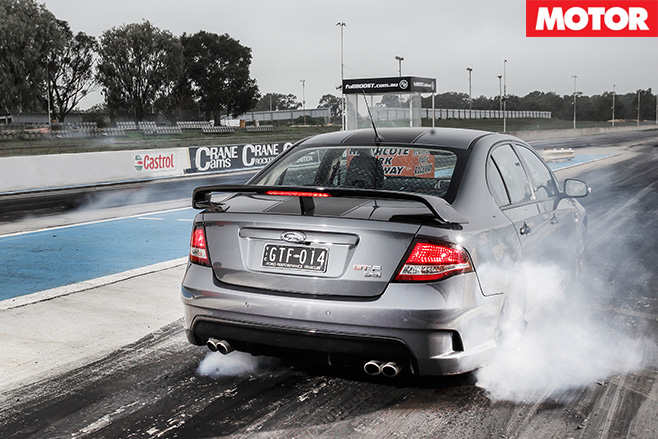
Having spent almost a decade playing second fiddle to its six-cylinder sibling, the V8 returned to its rightful place atop the fast Falcon heirachy thanks to a $36 million investment in the locally-designed and built ‘Miami’ 5.0-litre supercharged V8, which debuted in the Series 2 FG FPV range in late 2010.
It was rated at 315kW/545Nm in the GS and 335kW/570Nm in the full-fat GT, but it only took a brief drive to deduce that Ford was being somewhat coy with the engine’s true outputs.
It wasn’t until the release of the most powerful Falcon model ever, FPV’s GT F swansong, that engineers admitted the existence of the ‘transient overboost’ function, which lifted outputs closer to 400kW/650Nm.
Little wonder that on the right surface, these blown Blue Oval bullets could rocket across the quarter mile in the mid-to-high 12-second bracket, radically altering the Australian performance car landscape. Would HSV have introduced a 430kW/740Nm supercharged GTS if its crosstown rival hadn’t raised the stakes to such giddy heights?
It’s a fitting final chapter to the Falcon story. Like any classic tale, there have been highs and lows, heroes and villians, but crucially it’s kept us captivated until the very last page. Now, after 56 years, it’s time to close the book.


